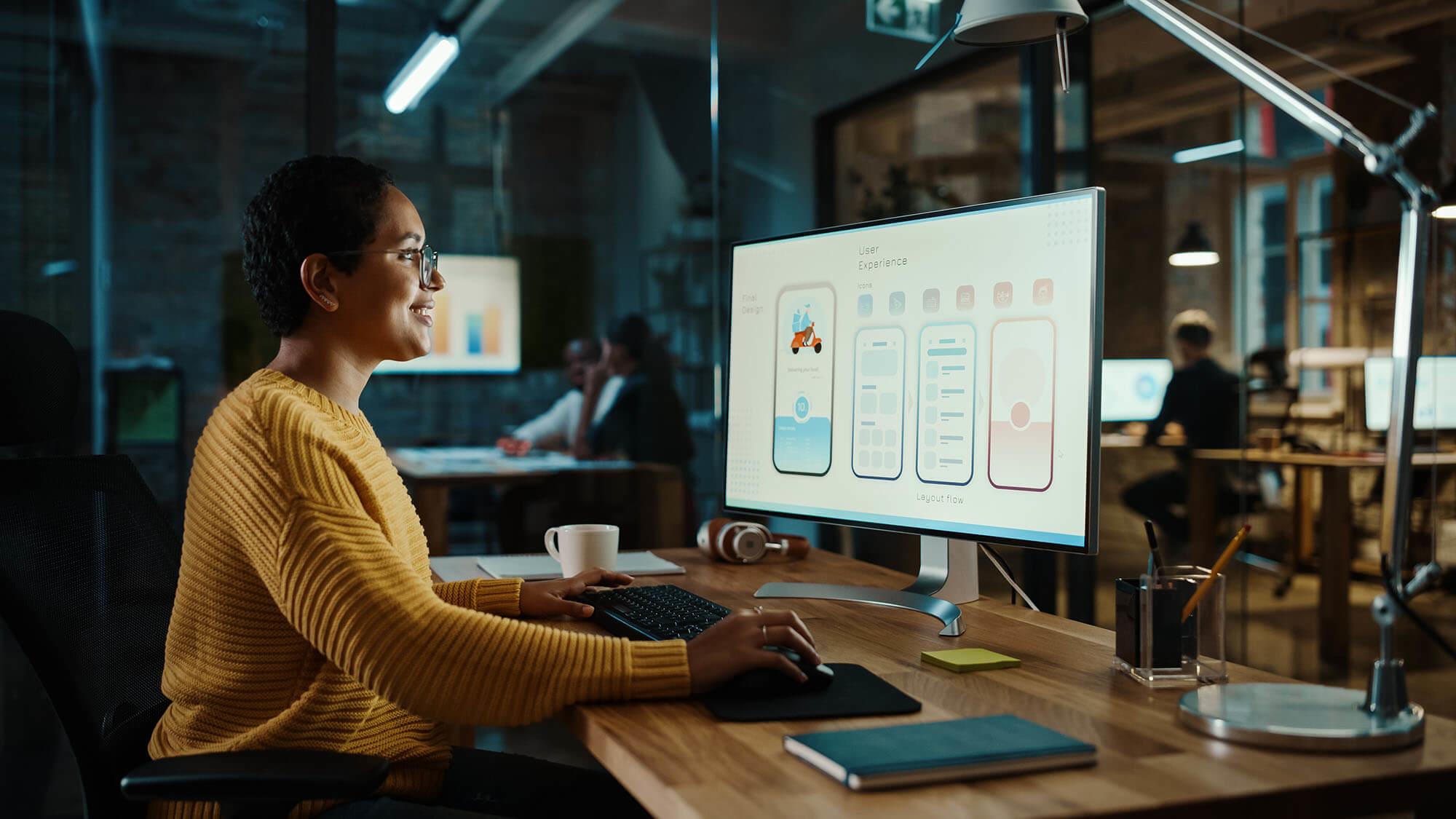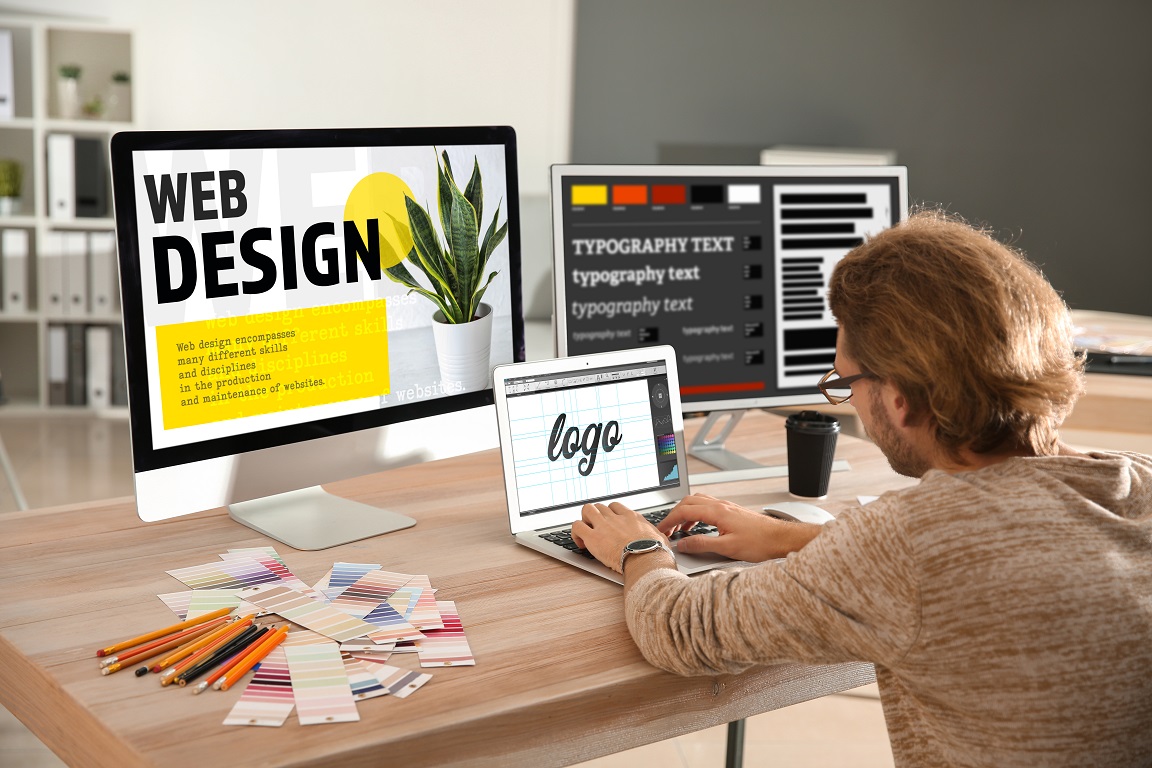Web Design London Ontario Agency for Digital Growth
Web Design London Ontario Agency for Digital Growth
Blog Article
Exactly How to Efficiently Integrate Visual Appeals and Capability in Website Design
When making a website, you need to strike a balance in between visual appeals and functionality. It's not almost looking excellent; your style needs to likewise serve a function and overview individuals successfully. By concentrating on simplicity and user-friendly navigation, you can create an interesting experience. Yet what aspects really enhance usability while preserving aesthetic allure? Let's discover the key concepts that can bring about a harmonious blend of appeal and function.
Comprehending the Relevance of Visual Appeals and Capability
Comprehending the equilibrium in between looks and performance is important for creating a reliable user experience when you design an internet site. An aesthetically appealing website grabs attention, however it's the functionality that maintains individuals engaged. Visitors will quickly shed interest and leave.Consider your target audience and what attracts them in if your website looks terrific but is tough to navigate. You intend to develop a style that shows your brand while ensuring simplicity of usage. Streamlined layouts, instinctive navigation, and clear contact us to activity can improve both aesthetic appeals and functionality.

Principles of Efficient Internet Style
To produce an efficient website design, you need to stick to a number of key principles that improve both individual experience and aesthetic charm. Prioritize simpleness; a tidy format helps customers navigate quickly. Utilize a consistent color pattern and typography to keep coherence throughout your site. This fosters knowledge and trust.Next, guarantee your style is receptive. Users gain access to web sites on numerous devices, so your style needs to adapt effortlessly. Take note of visual pecking order; highlight vital aspects with shade, size, or placement to assist customers' focus.Finally, incorporate adequate white room. It prevents mess and makes content more digestible. Bear in mind, effective website design equilibriums visual appeals and functionality, so every design option must offer an objective. By complying with these concepts, you'll develop a website that's not just visually enticing yet additionally user-friendly, ultimately maintaining visitors engaged and urging them to return.
Focusing On Individual Experience
When prioritizing customer experience, you'll wish to begin by recognizing what your individuals absolutely require. Simplifying navigation design can make a massive difference in how easily they discover what they're trying to find. Likewise, improving aesthetic hierarchy helps lead their focus to the most vital components on your site.
Recognizing Individual Demands
Recognizing customer needs is vital for creating an appealing internet experience that keeps site visitors returning. To achieve this, you should identify the objectives and preferences of your target market. Start by performing user research, like surveys or meetings, to gather insights on what customers value most. Take note of their discomfort points and obstacles when connecting with similar websites. This details allows you to tailor your layout, ensuring functionality lines up with customer assumptions. Additionally, consider creating individual personalities that stand for various sectors of your audience, aiding you visualize their requirements throughout the style procedure. When you prioritize comprehending individual demands, you develop a web site that not only looks terrific yet additionally delivers a seamless, enjoyable experience that promotes commitment.
Simplifying Navigating Layout

Enhancing Aesthetic Power Structure
A strong visual hierarchy is crucial in guiding customers through your internet site and guaranteeing they involve with crucial material. To achieve this, make use of spacing, color, and size tactically. Make essential aspects like headings bigger and bolder than body message, drawing interest promptly. Make use of contrasting shades to highlight contact us to activity, motivating clicks. Furthermore, use sufficient white room to separate areas, making content absorbable and inviting.Consider the flow of info; set up elements rationally, leading individuals' eyes from one factor to the following. Usage aesthetic signs, like lines or arrowheads, to direct attention. By prioritizing aesthetic power structure, you boost user experience and boost the possibility of conversions, guaranteeing your web site is both aesthetically pleasing and functionally efficient.
Shade Theory and Its Influence On Usability
While picking the ideal shades for your site might look like a small information, it considerably affects use and user experience. Color influences how users view details and can prevent or improve navigation. Contrasting shades can help vital components stand out, making it easier for visitors to locate what they need.Additionally, think about the psychology of shades: blue commonly motivates trust, while red creates urgency. Knowing your target market can assist your shade selections, assuring they reverberate well.Moreover, regular shade plans help build brand identification, making your internet site extra remarkable. Nevertheless, be careful-- a lot of colors can bewilder customers. Adhere to a limited palette that matches your material and keeps clarity.Incorporating access is additionally important; confirm your shade combinations get along for those with aesthetic disabilities. By thoughtfully applying color theory, you'll boost use and produce a much more engaging individual experience.
Typography: Balancing Design and Readability
Color choices established the stage for your site, but typography plays a similarly essential role in enhancing user experience. You desire your message to communicate plainly while likewise reflecting your brand name's individuality. Beginning by picking fonts that are not just appealing yet likewise legible. Sans-serif font styles often function well for digital screens, as they're easier to review at different sizes.Maintain a power structure by making use of various font style sizes and weights; this overviews users via your material effortlessly. Consider line spacing and letter spacing; also tight can annoy visitors, while too loose can interfere with the flow. Limitation your font selections to two or three to maintain the layout cohesive.Finally, always test your typography across various tools and web browsers. What looks good on one screen may not on an additional. Balancing style with readability warranties that your message resonates, maintaining your target market notified and involved.
Receptive Layout: Making Looks Work on All Gadgets
To guarantee your website looks wonderful on any type of device, you'll require to embrace responsive style principles. This technique warranties your website adapts to various display sizes, supplying an ideal individual experience. Beginning by making use of liquid grids and flexible photos that scale seamlessly. Rather than repaired dimensions, choose for percents and loved one units, permitting your format to readjust dynamically.Next, carry out media questions in your CSS. These let you use different styles based upon device qualities, like screen size. By doing this, you can keep visual allure while assuring functionality.Don' t neglect concerning touch targets; make specific switches and links are very easy to touch on smaller sized screens. Prioritize necessary material, so individuals can easily navigate your website no matter of their gadget. By concentrating on these components, you'll create an engaging, aesthetically appealing experience that fulfills the requirements of all customers, whether they get on a smart device, tablet computer, or desktop .
Conducting Functionality Screening for Constant Improvement
To boost your website design, you need to set clear usability objectives that align with customer demands. By performing user tests, you can collect important feedback on just how genuine people connect with your site. Assessing these outcomes will help you make notified enhancements and develop a much more effective user experience.
Defining Use Goals
While appearances can draw customers in, defining functionality goals is essential for guaranteeing their experience remains seamless and gratifying. Begin by recognizing what you want individuals to achieve on your website (website design london Ontario). Consider their actions, demands, and tasks. Are they searching for info, making a purchase, or registering for an e-newsletter? Establish clear standards to measure success, like task conclusion prices or time on job. Prioritize user-friendly navigation, easily accessible web content, and receptive layout to enhance functionality. Regularly revisit these objectives as individual expectations evolve. By specifying use objectives, you create a framework for assessing and enhancing your web site's efficiency. This concentrate on usability not just improves customer complete satisfaction however likewise enhances the overall effectiveness of your style
Carrying Out Individual Tests
Carrying out user examinations is important for refining your site and ensuring it meets your audience's demands. Begin by recognizing your target individuals and producing a test plan that outlines your objectives. Use a mix of qualitative and measurable techniques, such as surveys, interviews, and task-based monitorings, to collect detailed responses. Invite participants to navigate your site while you observe their communications and keep in mind any type of problems they encounter. Encourage open discussion to catch their thoughts and sensations concerning the style and functionality. Keep sessions brief and concentrated, ensuring you cover vital locations without overwhelming users. Ultimately, make certain to document all searchings for, as this info will be invaluable for making enlightened design decisions that enhance both aesthetic appeals and functionality.
Analyzing Examination Results
Just how can you successfully analyze the outcomes of your usability examinations to drive continuous renovation? Start by classifying feedback right into common styles. Look for patterns in individual actions that highlight pain factors or locations for enhancement. Usage quantitative data, like job completion prices and time on task, to determine use objectively. Don't neglect to think about qualitative understandings from user comments; they often expose underlying concerns that numbers can't show. Focus on the most impactful findings and produce workable items for your style team. Remember, it has to do with iterating-- carry out changes, after that examination again. This cycle of testing, assessing, and refining helps you website balance aesthetics and performance, guaranteeing your website satisfies individual requirements effectively while maintaining visual appeal.
Regularly Asked Concerns
How Do I Choose the Right Color Combination for My Web site?
To select the ideal shade scheme for your website, consider your brand's personality, target audience, and emotional impact (website design london Ontario). Usage shade psychology, develop consistency, and warranty readability. Examination mixes to see what reverberates finest with visitors
What Tools Can Assist With Web Style Aesthetics and Functionality?
You can make use of devices like Adobe XD, Figma, and Map out to enhance your website design's aesthetic appeals and performance. These platforms provide instinctive user interfaces, cooperation functions, and pre-made themes to enhance your innovative process and improve your styles.
Exactly How Can I Incorporate Animations Without Compromising Capability?
To include computer animations without compromising functionality, focus on subtle effects that boost individual experience. Use CSS computer animations for smoother communications, assurance quick load times, and test on numerous gadgets to maintain efficiency while adding visual allure.
What Prevail Mistakes to Stay Clear Of in Website Design Appearances?
When making, stay clear of chaotic designs, poor shade choices, and irregular font styles. Do not ignore mobile responsiveness, as it can alienate customers. Confirm your layout lines up with your brand name, producing a seamless experience that involves visitors properly.
Exactly how Often Should I Update My Web site's Design for Optimum Looks?
You ought to upgrade your website's style every 1-2 years to stay up to date with patterns and maintain perfect appearances. Consistently renewing visuals assists involve guarantees and site visitors your website stays straightforward and appealing. When you make an internet site, understanding the balance in between aesthetics and performance is crucial for creating an efficient customer experience. To create an effective web layout, you require to stick to several essential concepts that boost both customer experience and visual appeal. Individuals gain access to internet sites on various devices, so your style must adjust flawlessly. When focusing on individual experience, you'll desire to start by recognizing what your users truly need. Start by carrying out individual research study, like surveys or meetings, to collect understandings on what individuals worth most.
Report this page